Chile, 2009
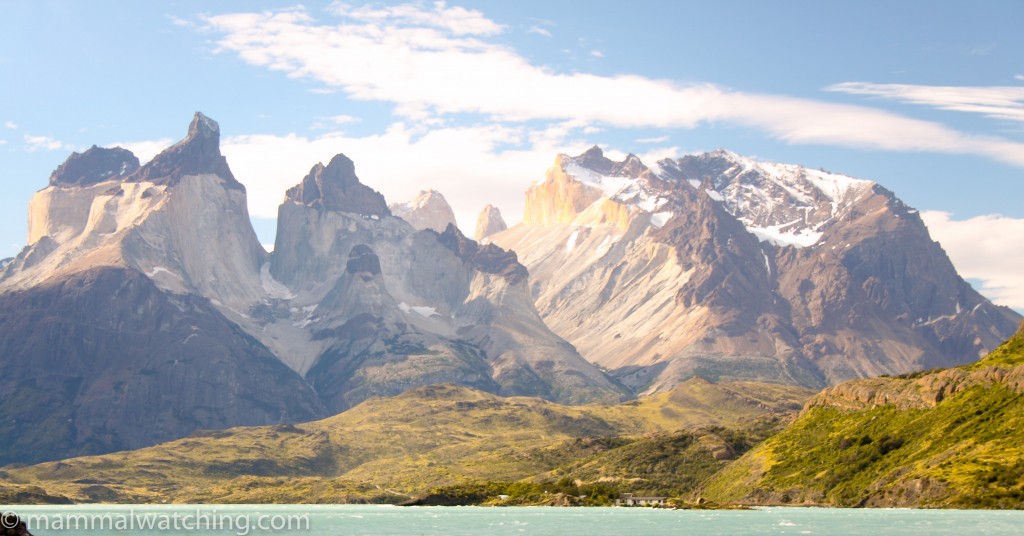
I first heard about Chile’s potential for mammal watching through Richard Webb and the Puma tours he pioneered here (see his trip reports at the bottom of this page). Not only does Chile have perhaps the finest Puma watching in the world, but it offers a range of other interesting mammals. I shamelessly copied Richard’s itinerary when I visited in February 2009, and I see that other tour companies are now doing the same.
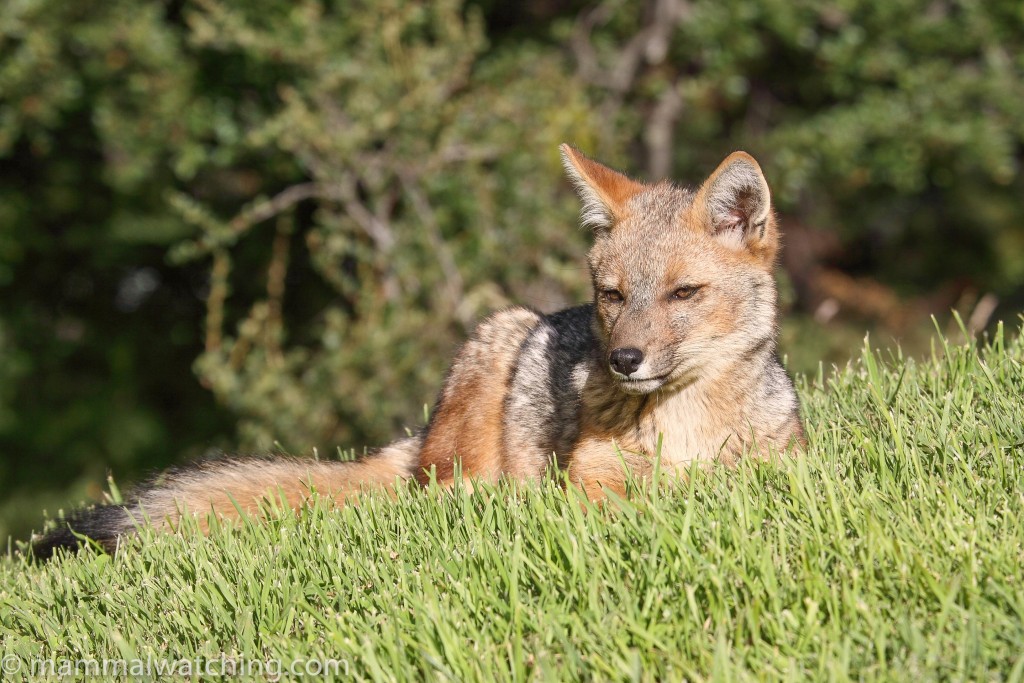 Culpeo, Pseudalopex culpaeus[/caption]
Culpeo, Pseudalopex culpaeus[/caption]
Some Observations
Chilean people are just about the friendliest people I have ever met. I picked up a few hitchhikers during my trip and all of them were keen to meet for drinks and dinner and converse with me and my 50 words of Spanish. And when I mentioned in a couple of cafés that I was trying to see an armadillo, within minutes the managers would be on the phone to friends and family trying to find out the best places to look. Chileans are also a very cultured bunch, who like to talk about poetry, music and wine. I was able, at least, to weigh in on the latter.

Guanaco, Lama guanicoe
The country is developed and it is safe. It isn’t all that cheap and some of the “tourist” hotels were considerably more expensive than they ought to have been I reckon. The wine is fabulous but otherwise it isn’t a gastronomic paradise: the food is not bad, but the emphasis seemed to be more on quantity than flavour. I saw more Pumas than I had good cups of coffee in my two weeks there.February 2009 was high summer in Chiloe Island and Patagonia. Shorts and a tee shirt are fine until the wind blew, at which point it got decidedly chilly. I don’t remember the wind not blowing for more than 10 minutes.
Chiloe Island
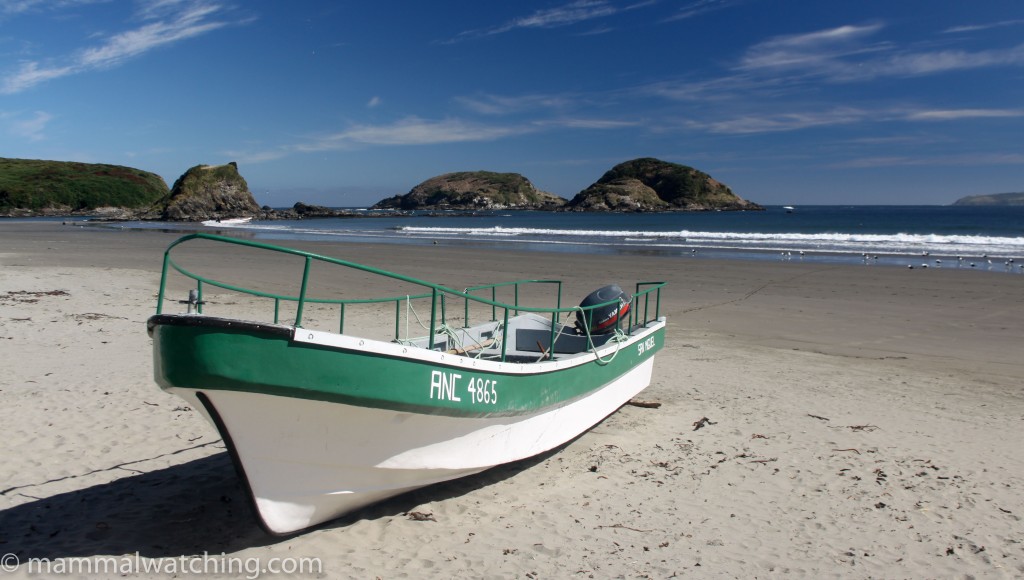
Pagua to Chacao Ferry
It takes an hour from Puerto Montt airport to reach the ferry to Chiloe that runs from Pargua to Chacao. The ferries operate continuously and you rarely need to wait more than five minutes to board. The ferry is free to ride as a foot passenger and I took the 30 minute crossing five times and looked for sea life.
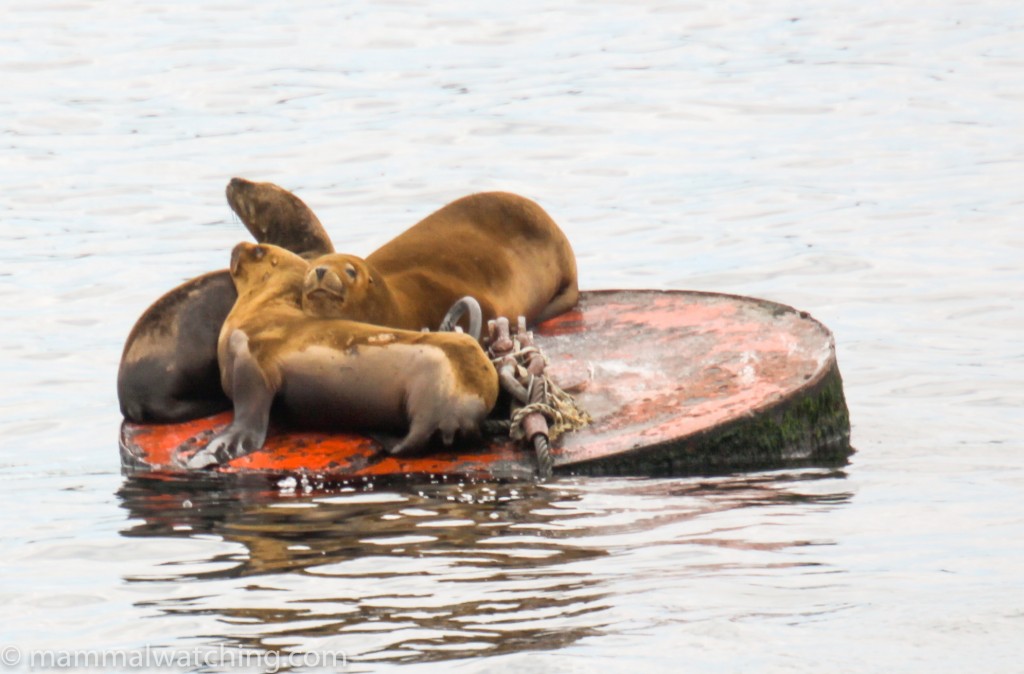
South American Sea Lions, Otaria flavescens
South American Sea Lions are easy to spot and I saw anything from 20 to 200 during each crossing. I also saw Peale’s Dolphins on several trips including one pod that briefly came into the ferry to bow-ride.
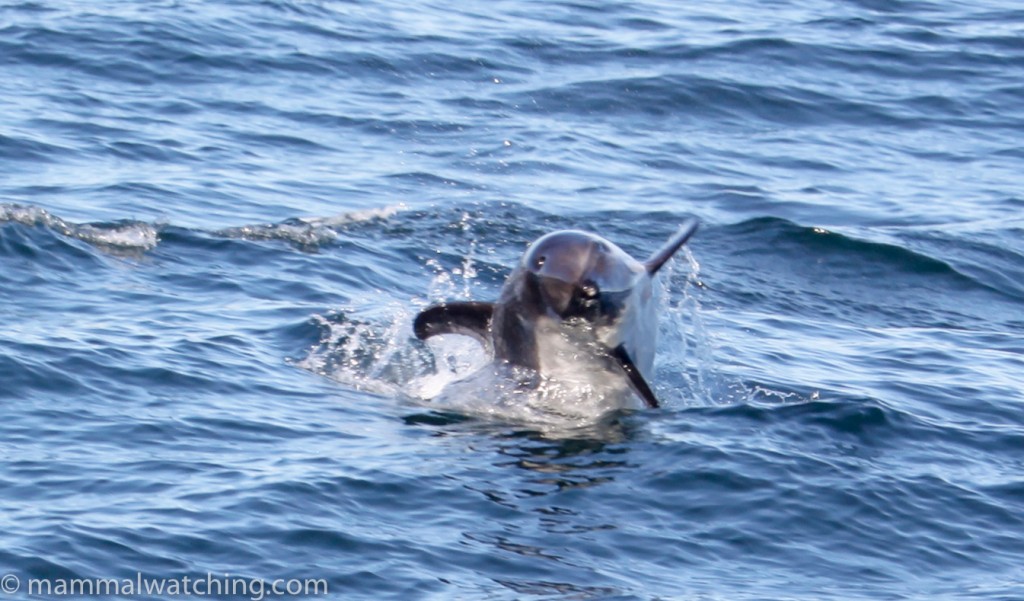
Peale’s Dolphin, Lagenorhynchus australis
Chilean Dolphins (or Toninos) are seen quite often it seems especially when it rains. But I couldn’t find any.
Punihuil
Punihuil, about 45 minutes west of Ancud, is well known for its colony of Humboldt and Magellanic Penguins.
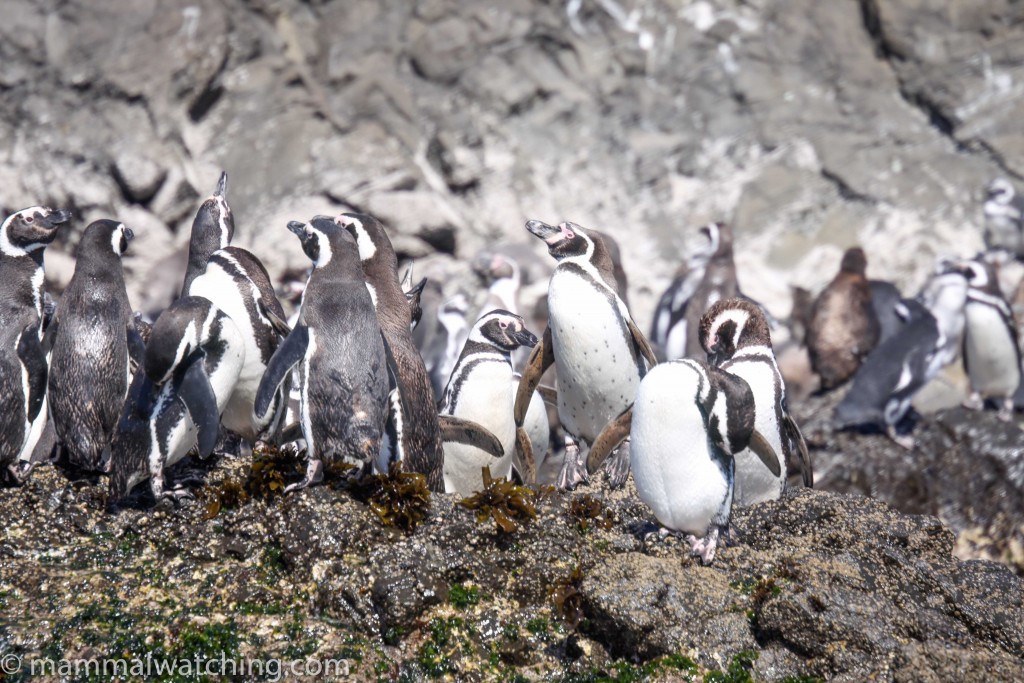
Punihuil Penguins
Endangered Marine Otters are common here (though it sounds like by 2018 they are much rarer) and the Wild Wings groups saw up to eight during a single trip. During the summer months the local fishermen take tourists out and around the little islands offshore to see the penguins and will often see Marine Otters too.
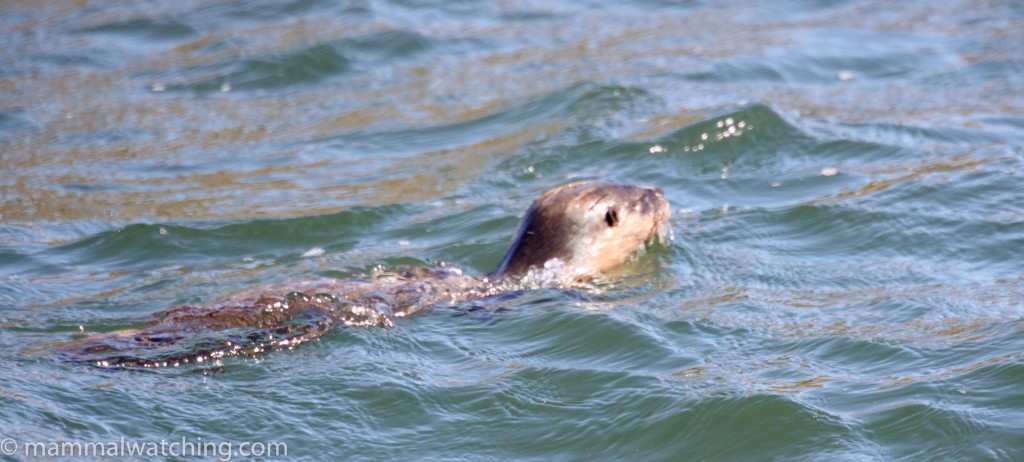
Marine Otter, Lutra felina
did see one otter well though and the driver saw a second. I’m sure I would have seen more if I’d been allowed to concentrate on them.
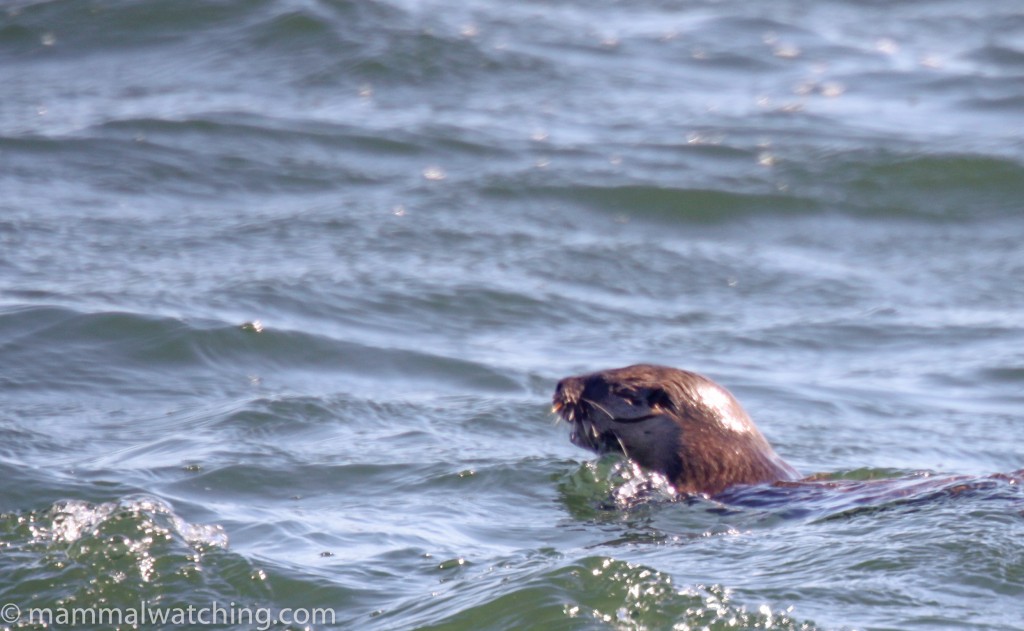
Marine Otter, Lutra felina
I expect the otters are pretty easy to find at any time, but low tide and a calm day is probably your best bet.
Chepu
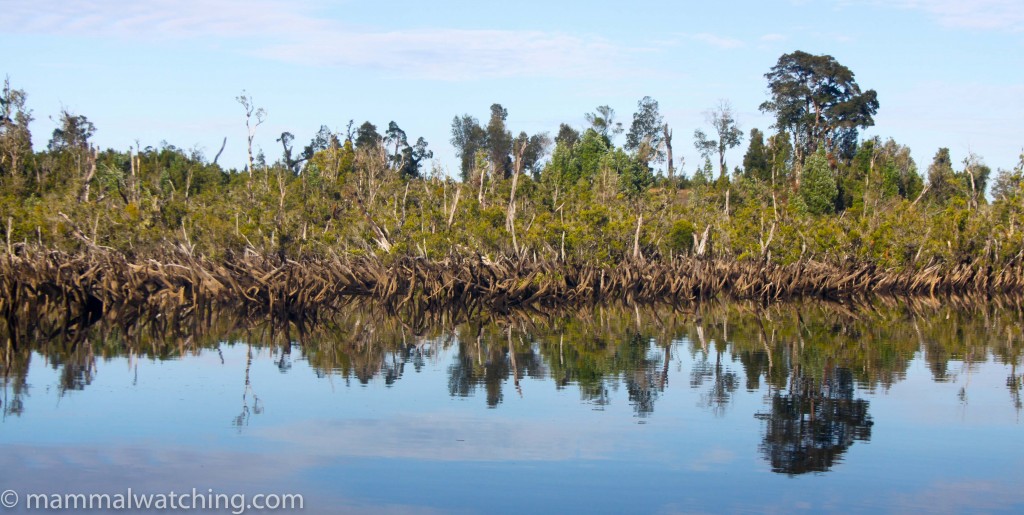
Chepu – about 40 minutes south west of Ancud – is a reliable spot for Southern River Otters, probably the world’s rarest otter. But they are not always easy to find. I visited twice, rocking up in the mid-afternoon and taking a three hour trip which produced several Coypus – my first non feral Coypus in fact – as well as a sunburned nose and a boat load of annoying large wasps. But no otters.
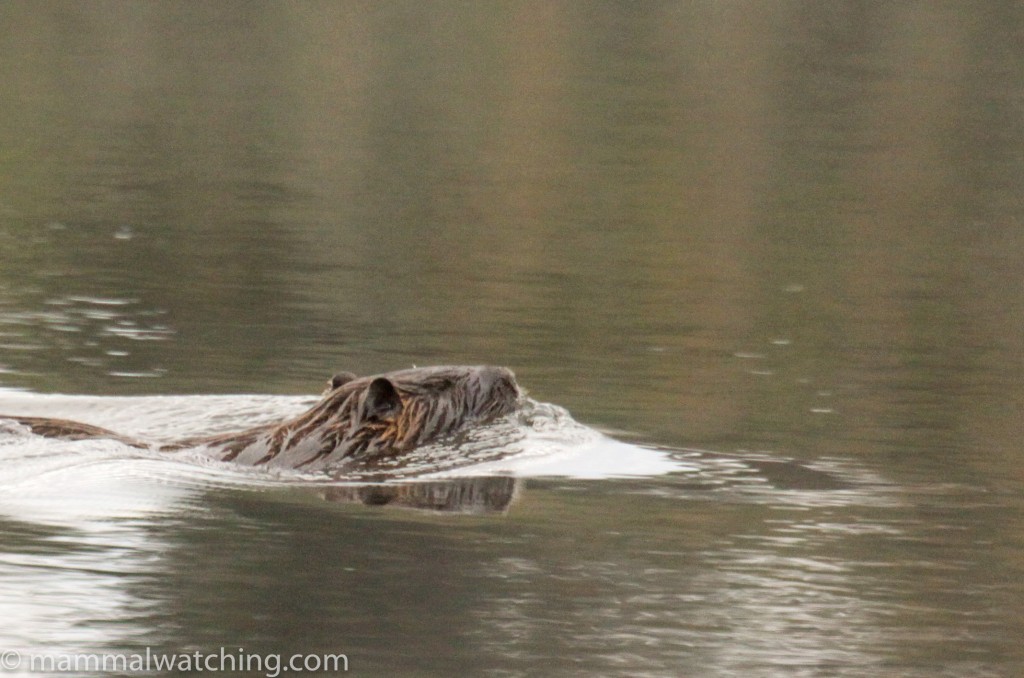
Coypu (Nutria), Myocastor coypus
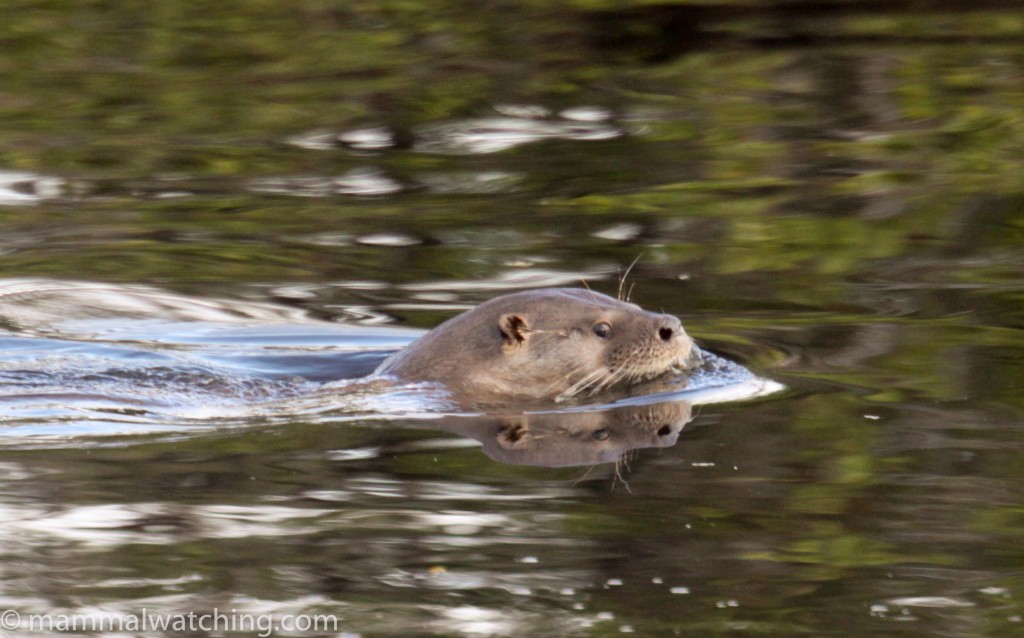
Southern River Otter, Lutra provocax
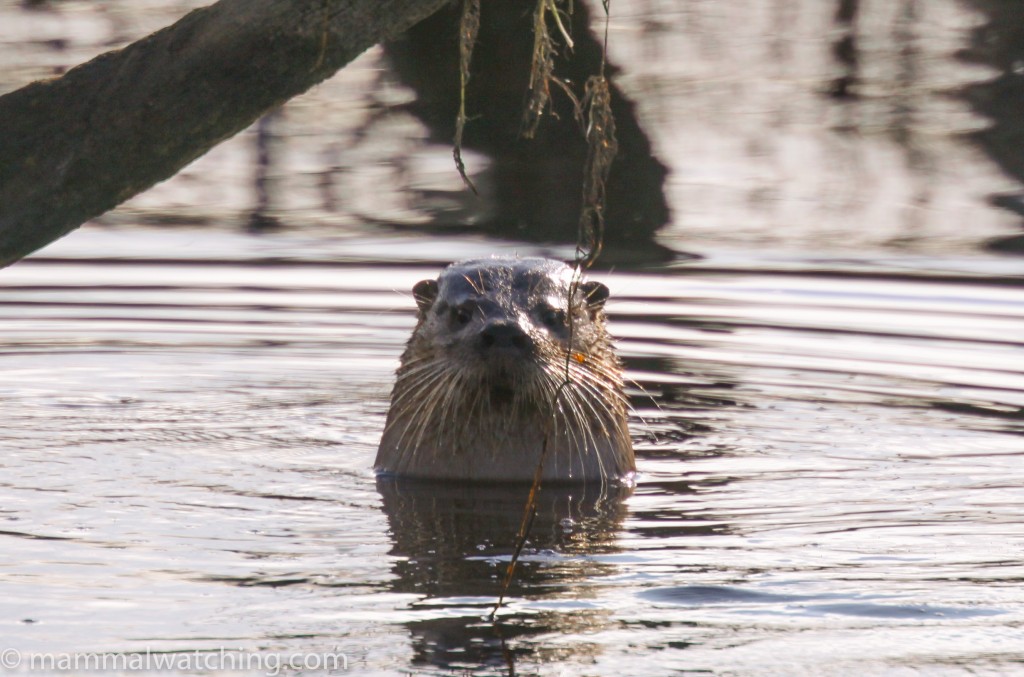
Southern River Otter, Lutra provocax
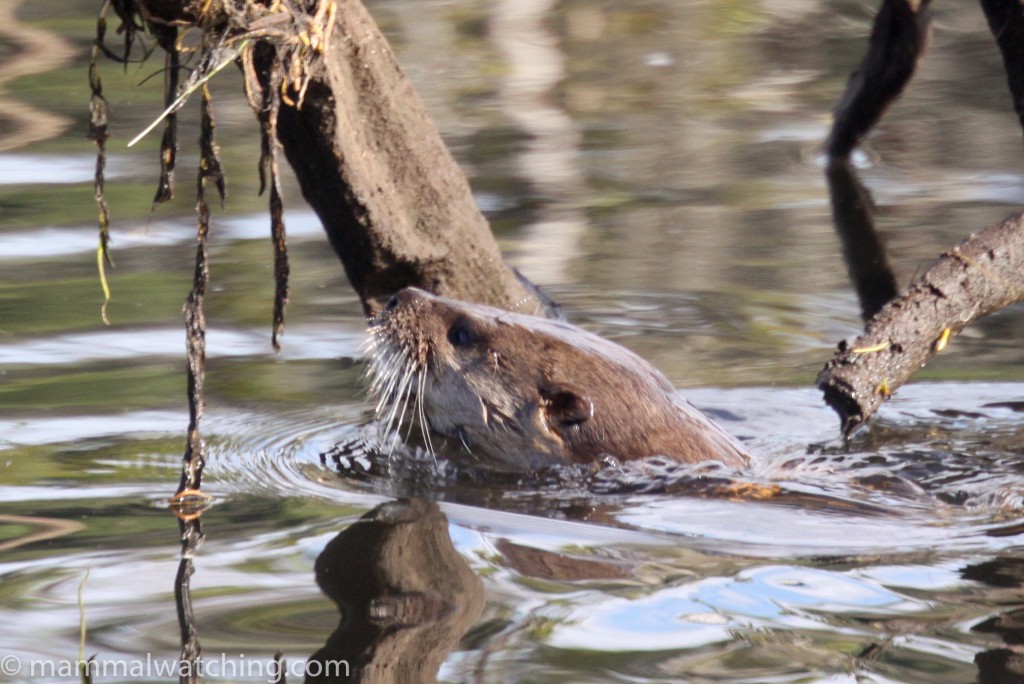
Southern River Otter, Lutra provocax
Javier said the animals are pretty common and I’d expect early morning to be the best time to look for them. Richard Webb saw them on both his trips but he struggled a bit and didn’t get long views so you might want to allow a bit of time to search for this species.In 2010 I was contacted by Fernando Claude at Chepu Adventures. They have just set up an ecotour company in Chepu and run kayak tours to look for the otters among other things. They also have accommodation. Worth checking out I think and I would use them if I go back. Fernando writes in perfect English.
Parque Tepuhueico
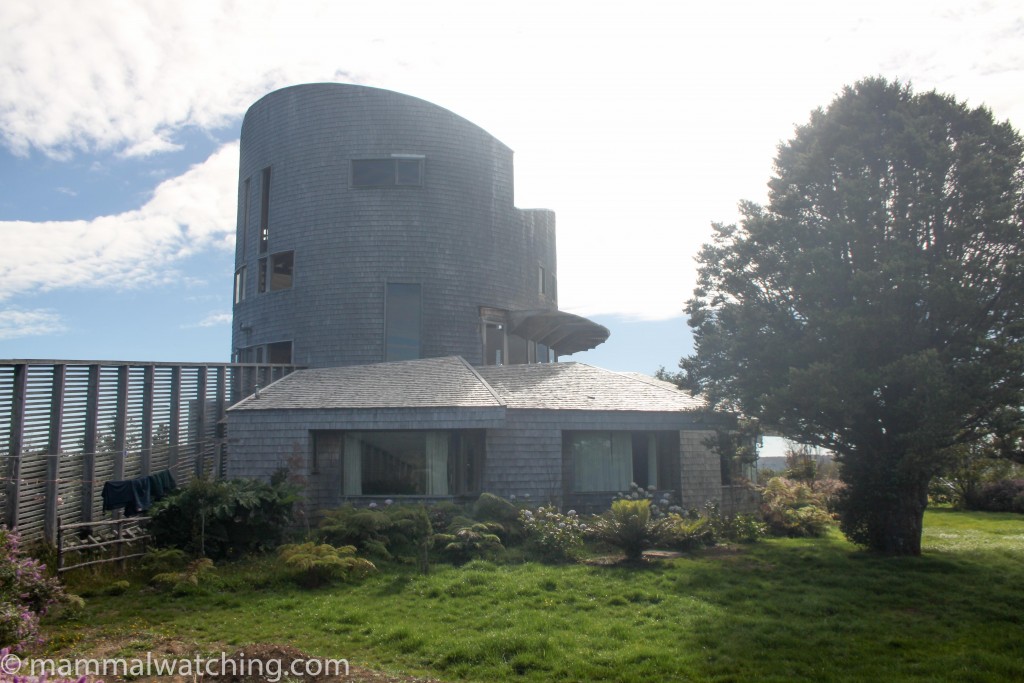
Parque Tepuhueico is a private park about an hour’s drive south west of Castro. It comprises an impressively designed eco-lodge overlooking a lake in the middle of a good patch of temperate rainforest. It is a strong hold for Southern Pudu (the world’s smallest deer) and the Critically Endangered Darwin’s Fox, of which only 250 are thought to remain.Both species were easy to see here. I saw two Pudus during about three hours spotlighting and three foxes. The Pudus stick to the forest and you should come across them on any of the tracks after dark. Several foxes are at least partially habituated and hang around the lodge area where they are occasionally fed. I saw all three animals within a kilometre of the lodge.Kodkods (or Guignas) are another good mammal here, but they are rare. Richard Webb found one in 2007, but he was very lucky I think. Monitos Del Monte – a small arboreal opossum closely related to Australia’s marsupials – are occasionally seen crossing the road, but would be hard to pick up in a spotlight.
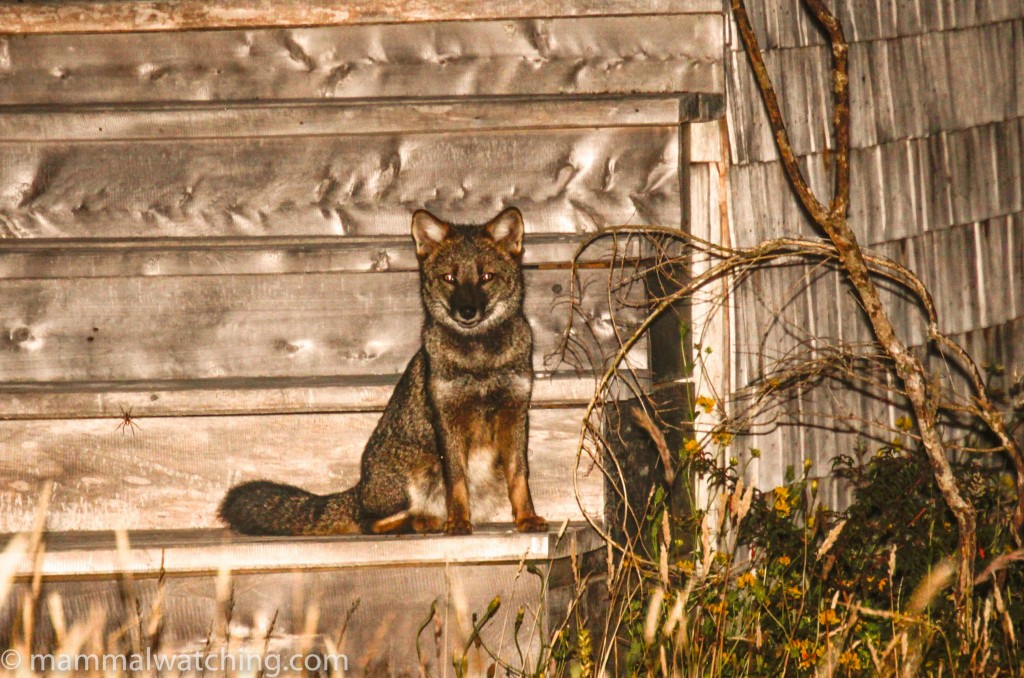
Darwin’s Fox, Pseudalopex fulvipes
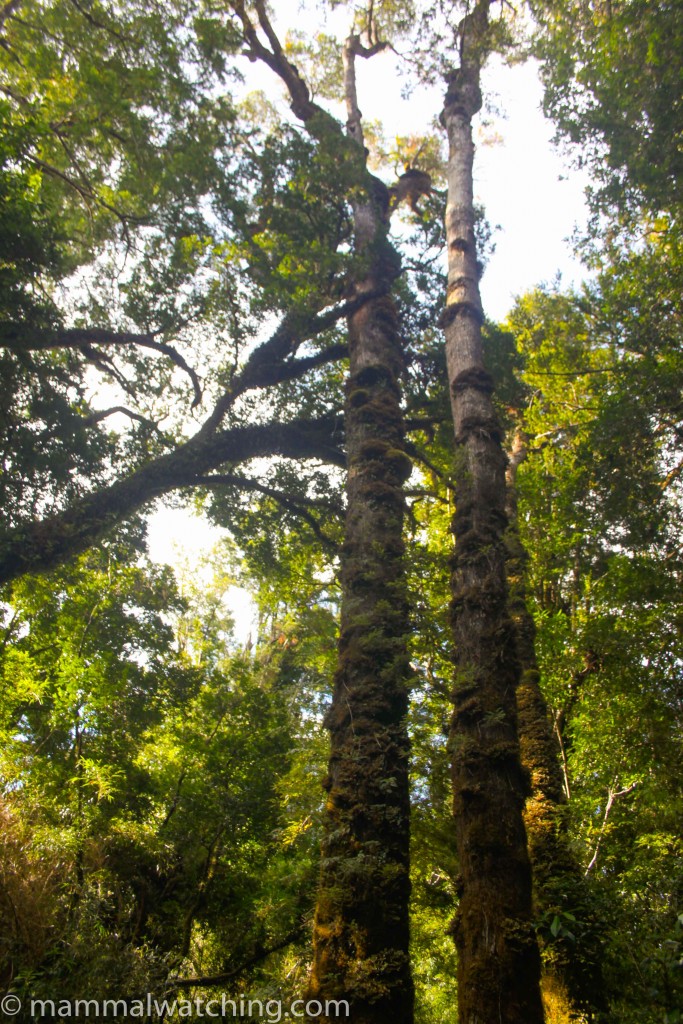
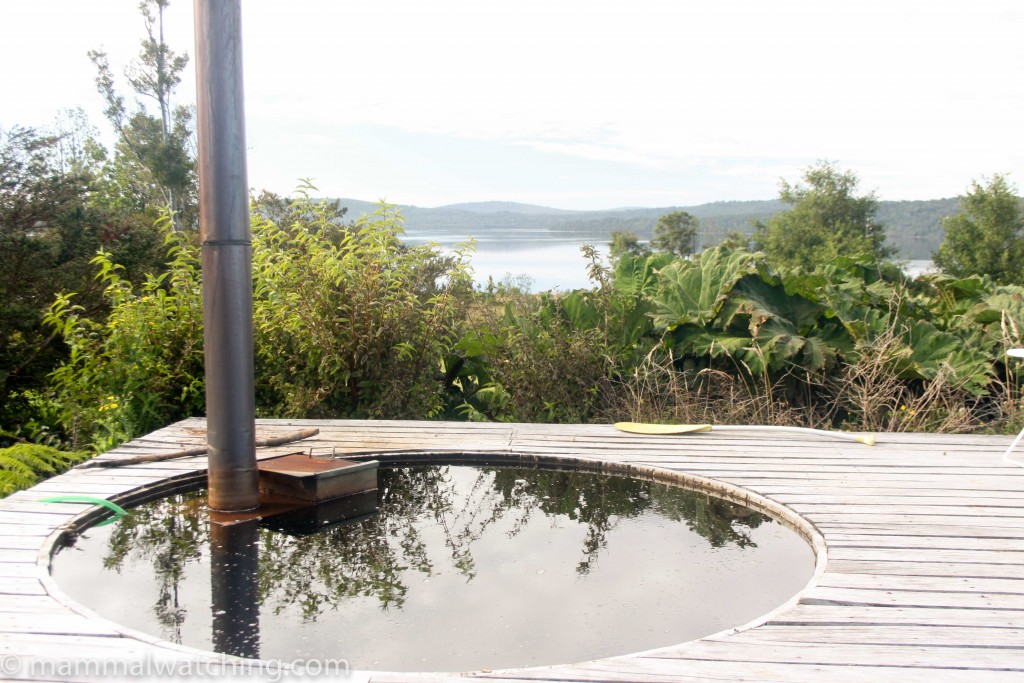
Hot tub with a view
The hotel itself is very nice but expensive if your focus is on the mammals rather than enjoying the amenities. There are some cabanas attached and if you bring your own food these could be a better option.
Quellon
Quellon, at the very end of the Pan-American Highway is not Chiloe’s most attractive town. It is the starting point however to take pelagic trips to look for Blue Whales (see Richard Webb’s reports). I didn’t bother to go looking for them and I guess it would also have been quite expensive to do so on my own. In fact I was also told that Blue Whales are quite common off the Punihuil penguin colony and closer in to shore. You could probably arrange quite easily an unofficial trip to go looking for them there if you just turn up and talk to the fishermen.I did shoot down to Quellon for an afternoon to look for the Chilean Dolphins or Toninos. These are common around Chiloe but hard to pin down. One of Richard’s reports mentioned that the bay between Triscao and Yaldad as a well known spot for them. Yaldad is a few km east of Quellon. I couldn’t spot any in the bay when I arrived but after half an hour parked by the boat ramp I scanned the bay again and found a pod of about eight animals in the scope. Their small rounded dorsal fins are quite distinctive and the pod spent at least half an hour wandering around the same small patch of ocean. A couple of animals came close to breaching. The only fishing boat around at the time was busy and couldn’t take me over to see them so although the views were good they were too distant for photographs.
Patagonia
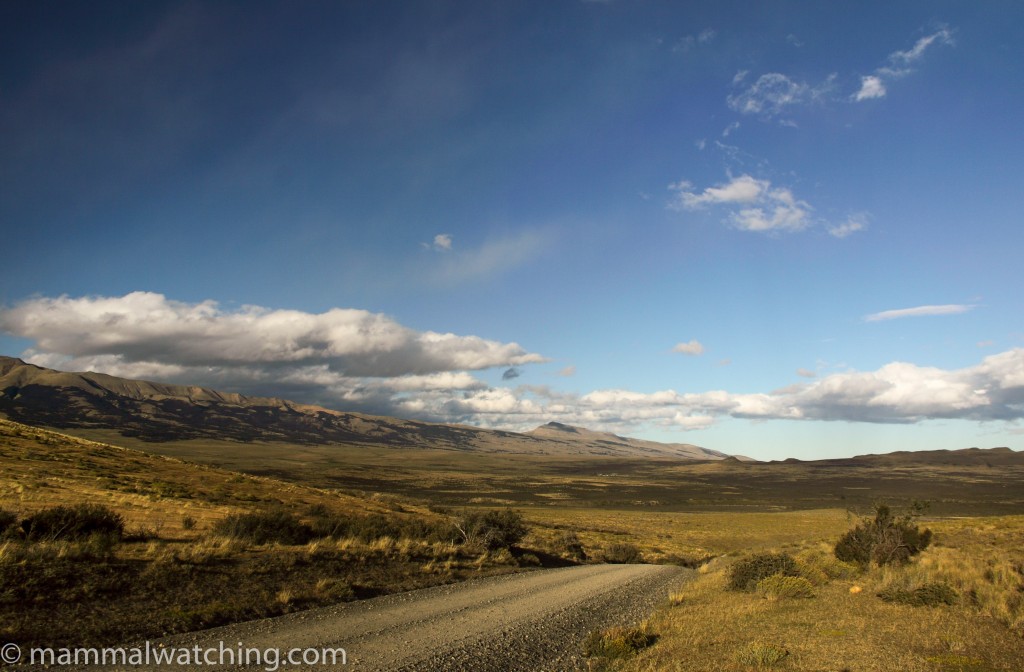
Punta Arenas to Puerto Natales
Punta Arenas is the main airport into Chilean Patagonia. I spent a day travelling from here to Puerto Natales, the gateway to Torres Del Paine National Park. My main aim was to see Commerson’s Dolphins en route so I took a detour to the straits of Magellan, where these dolphins are common.
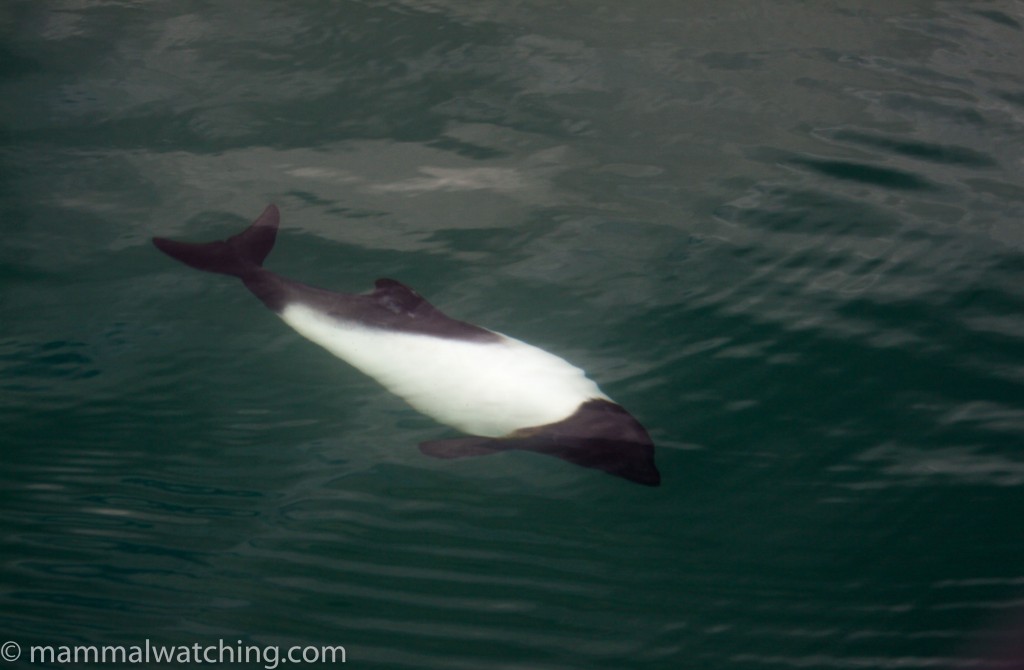
Commerson’s Dolphin, Cephalorhynchus commersonii
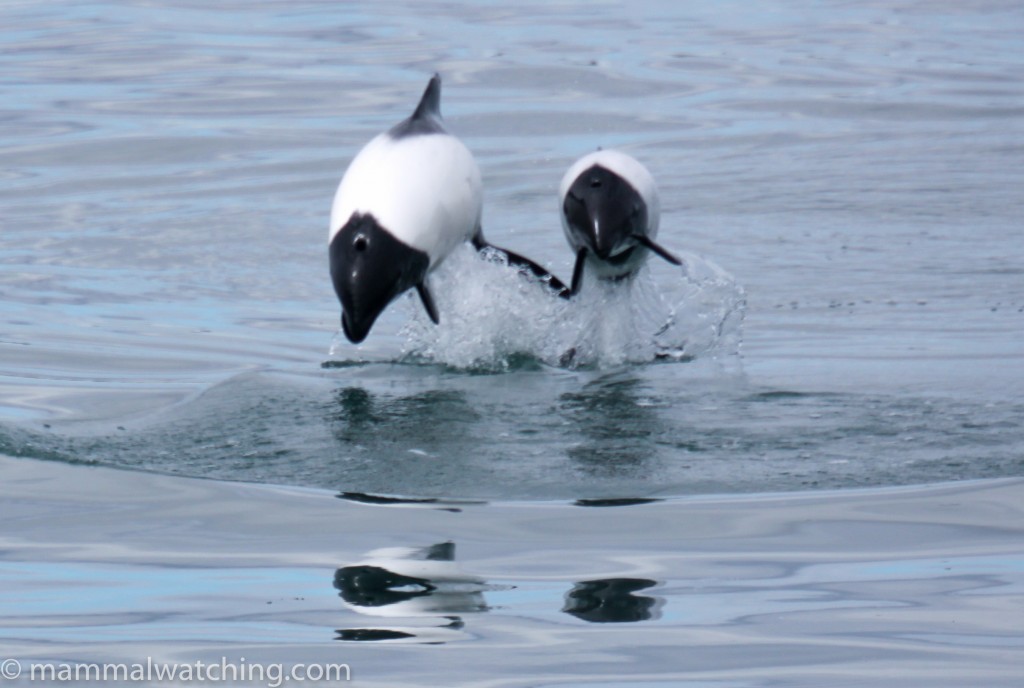
Commerson’s Dolphin, Cephalorhynchus commersonii
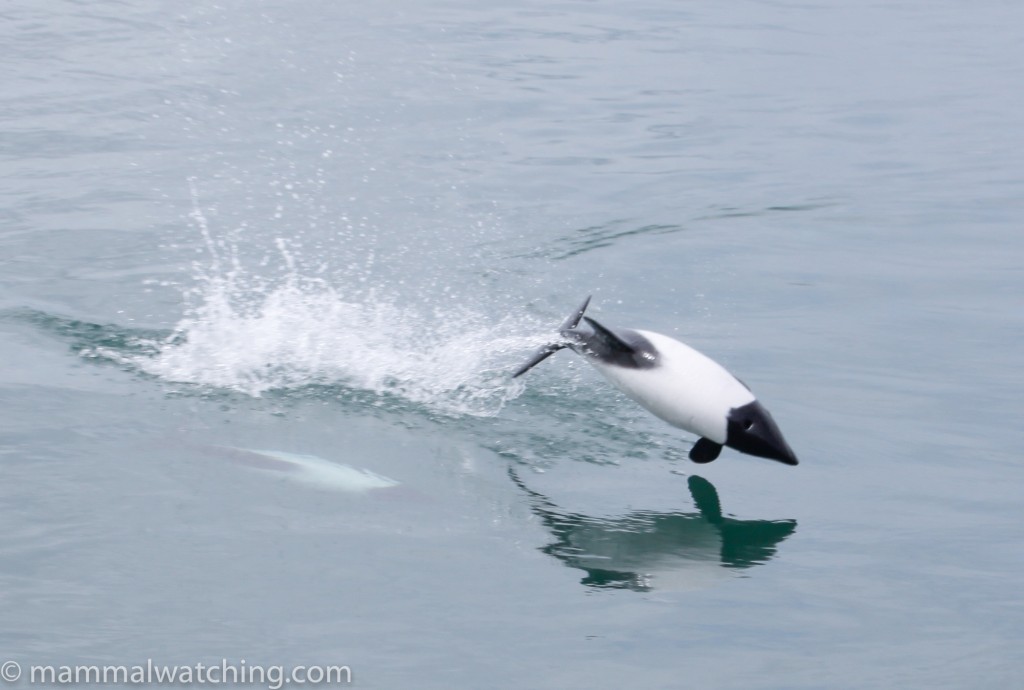
Commerson’s Dolphin, Cephalorhynchus commersonii
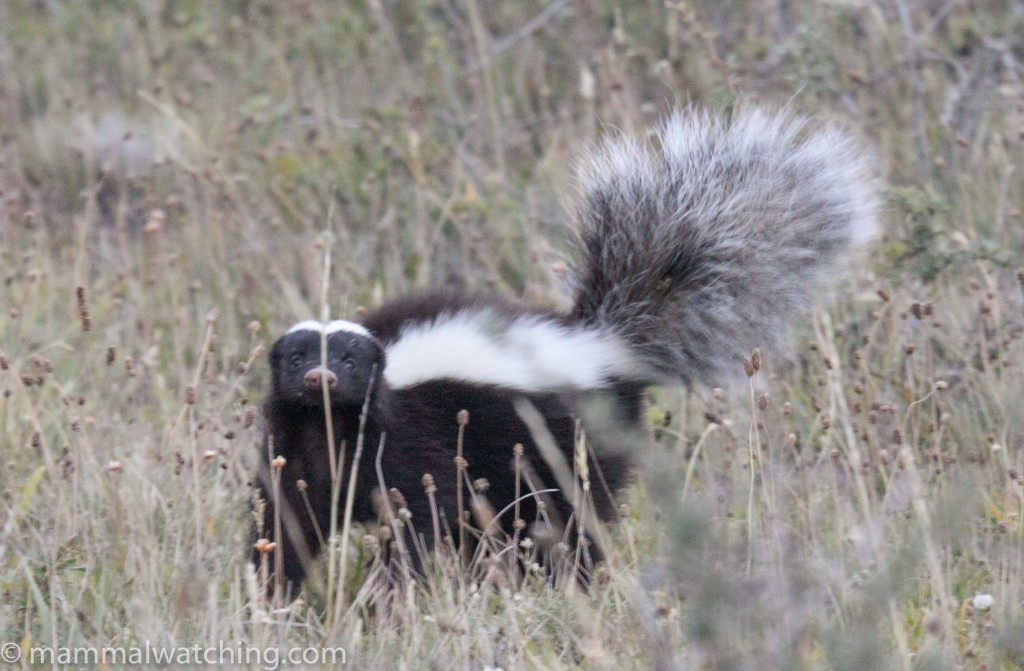
Patagonian (Humboldt’s) Hog-nosed Skunk, Conepatus humboldtii

The road to Tierra Del Fuego
I was also keeping an eye open for Hairy Armadillos on the windswept plains. The owner of the café on Tierra Del Fuego where I had lunch said that they weren’t common in the north of the island but Laguna Blanca, in the southern part of the island, had muchos muchos. But that would have meant another five hours of travelling, and the day’s drive took 11 hours as it was. Maybe next time.
Torres Del Paine National Park
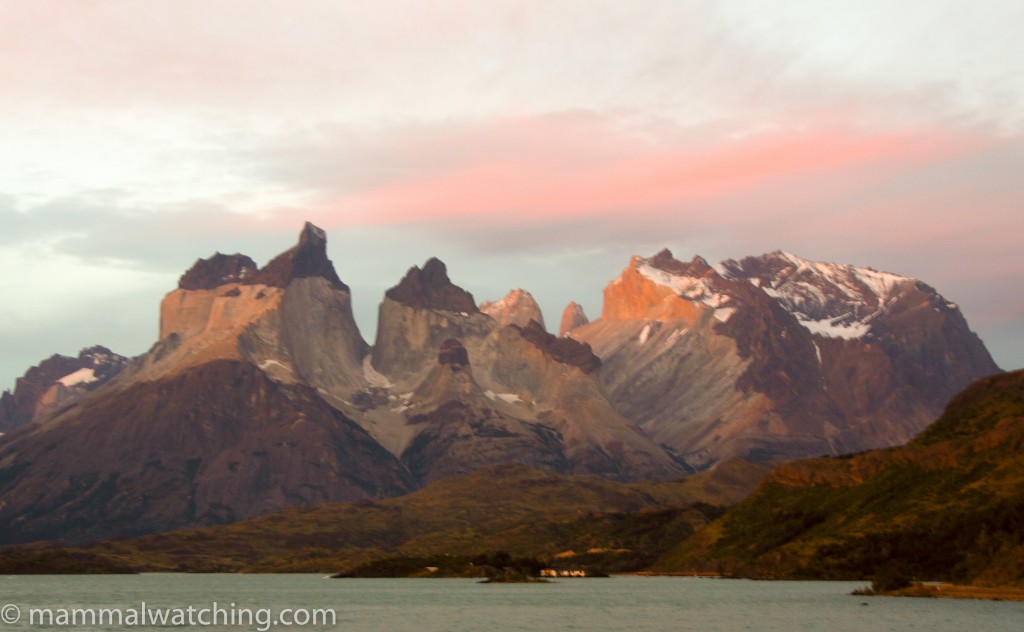
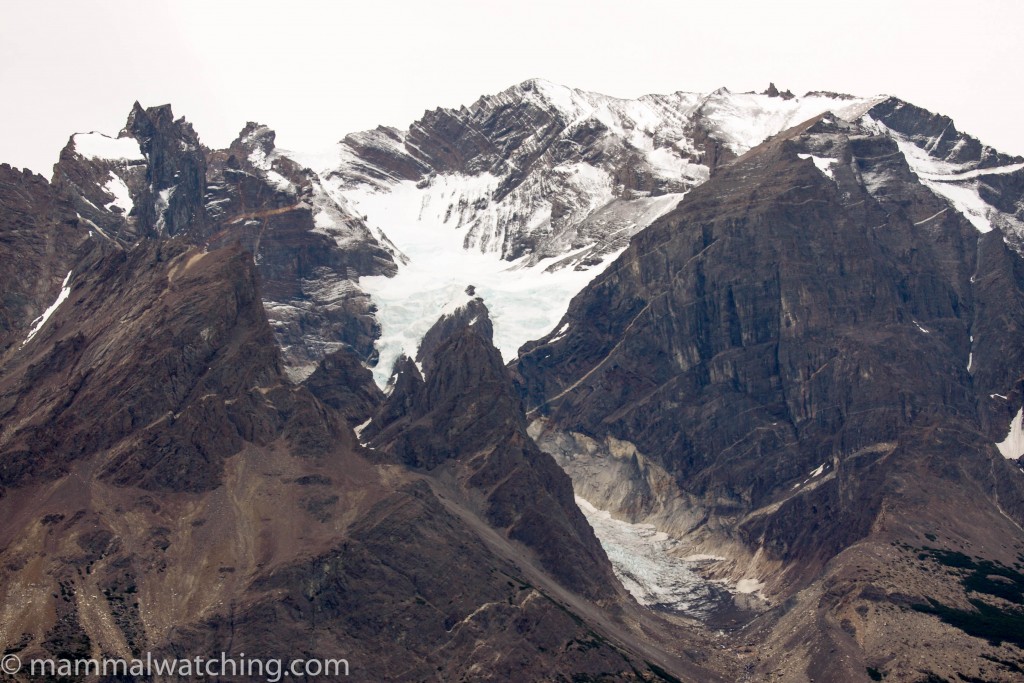
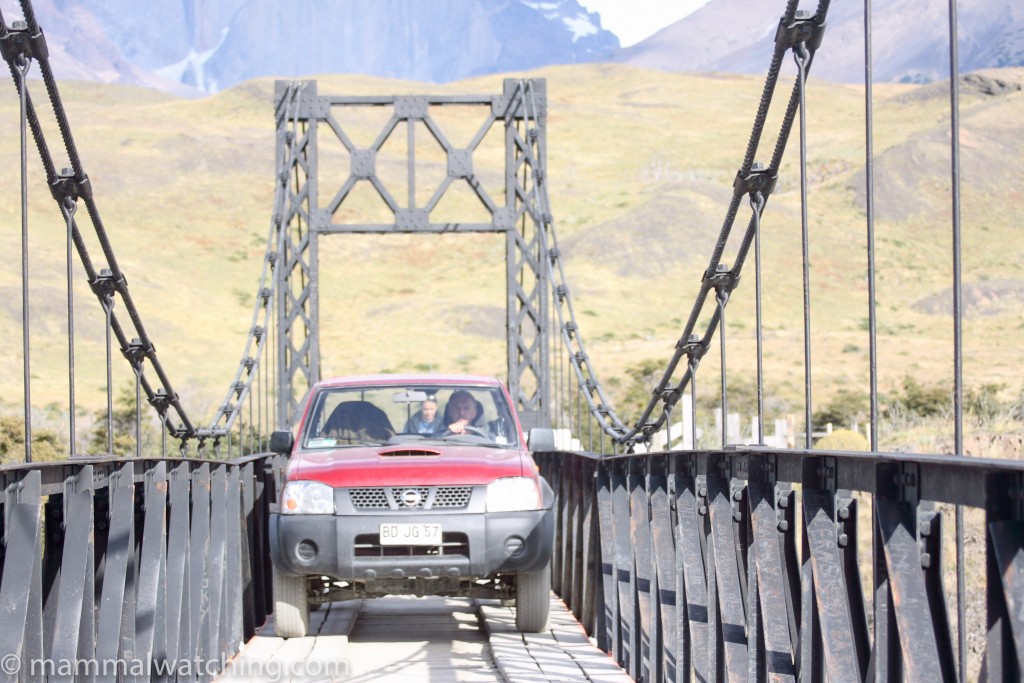
Take out extra rental car insurance before you cross this bridge!
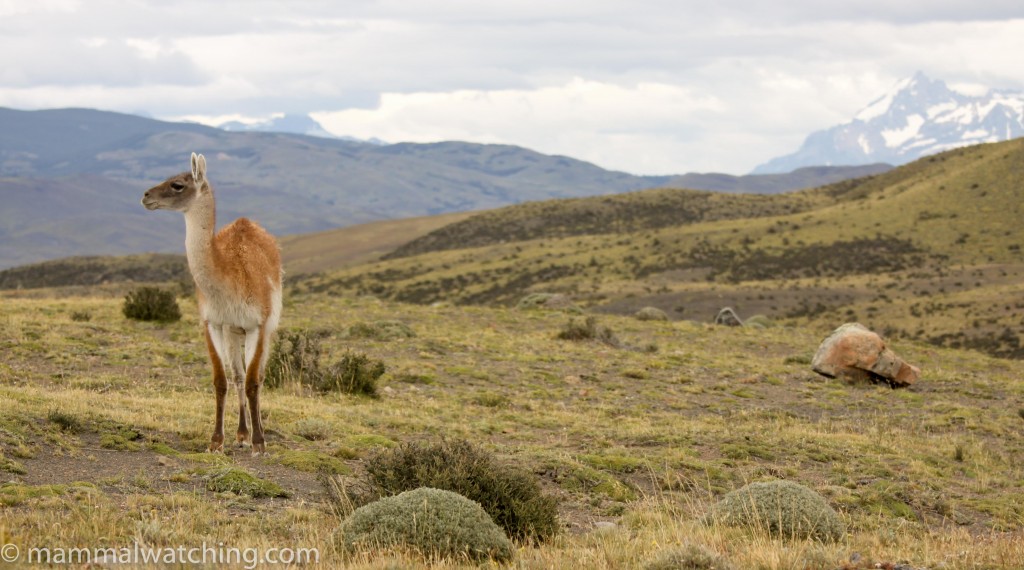
Puma food in Puma habitat
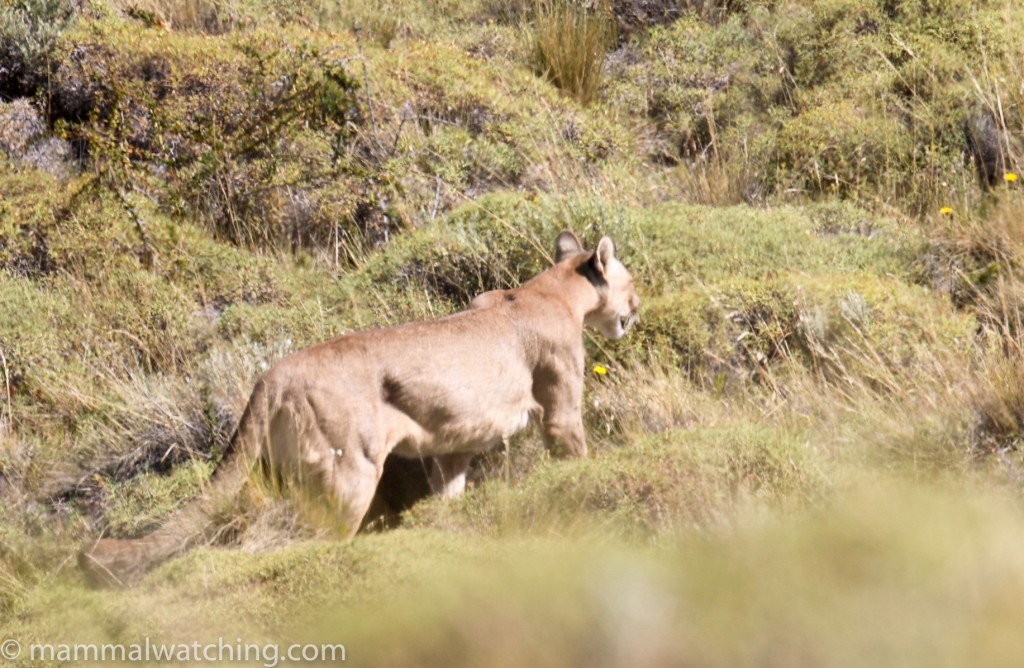
Puma, Felis concolor
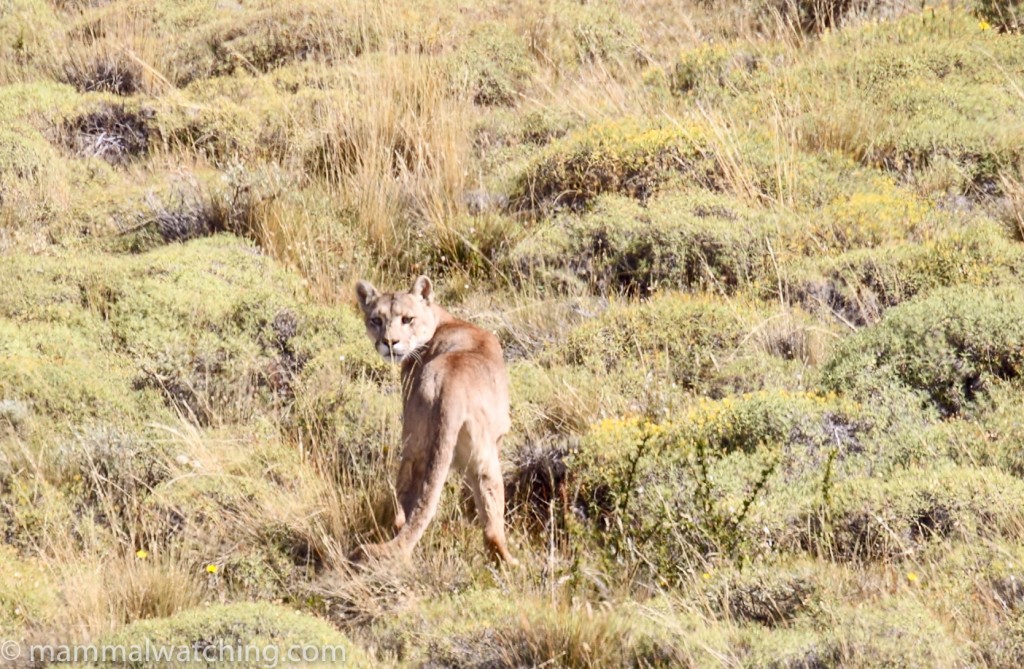
Puma, Felis concolor
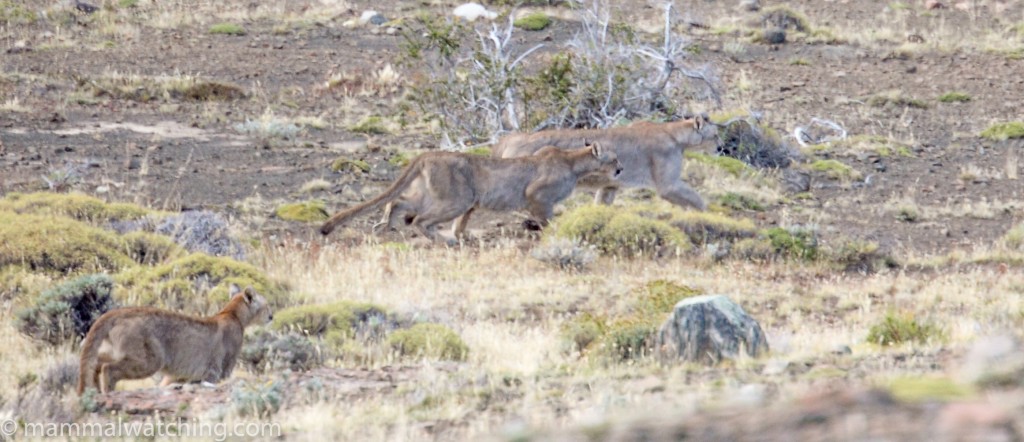
Puma, Felis concolor, stampede
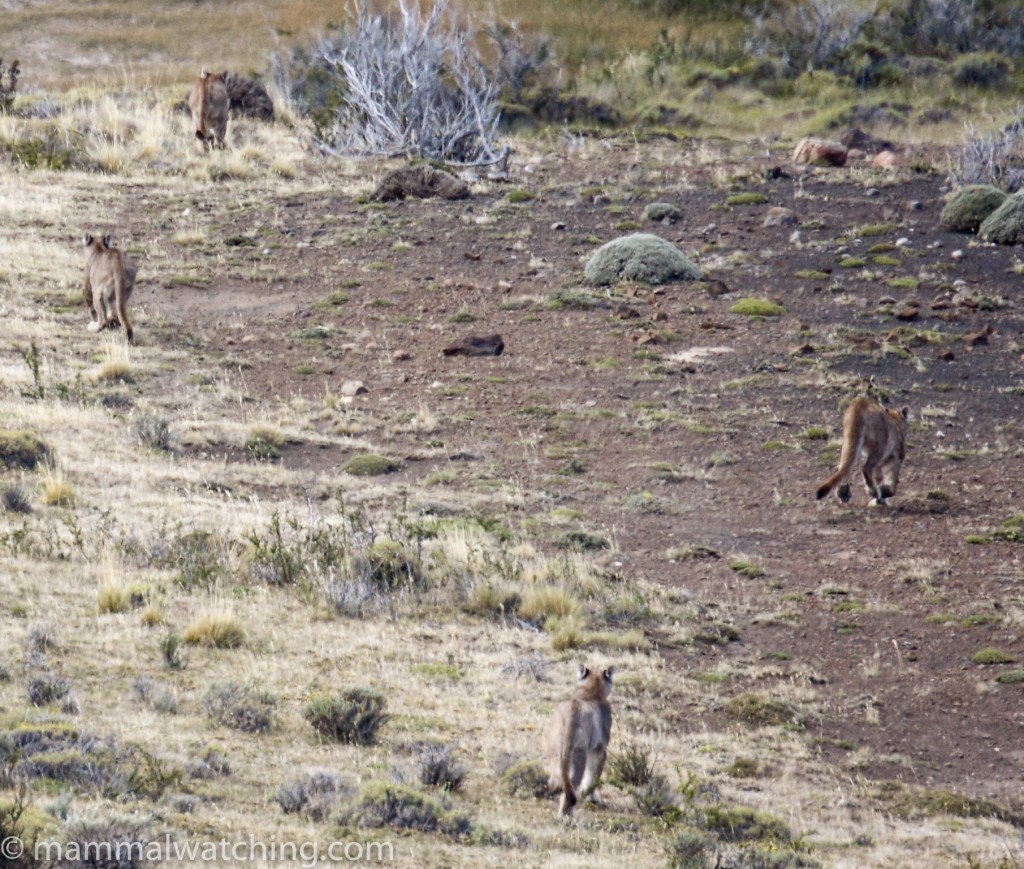
Puma, Felis concolor, stampede
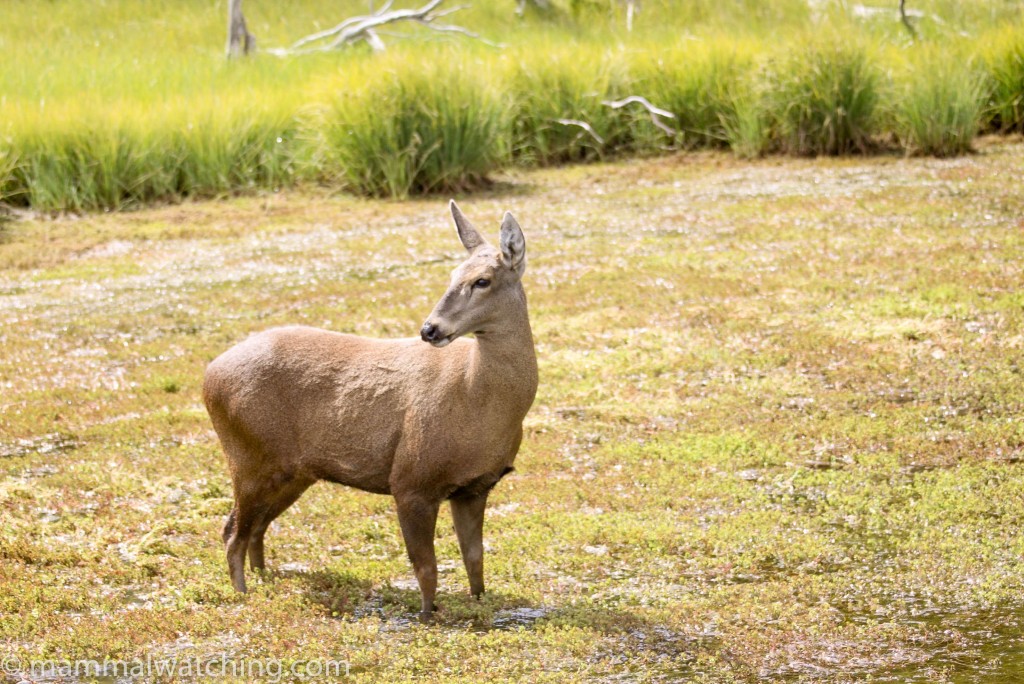
Chilean Huemel (Guemal), Hippocamelus bisulcus
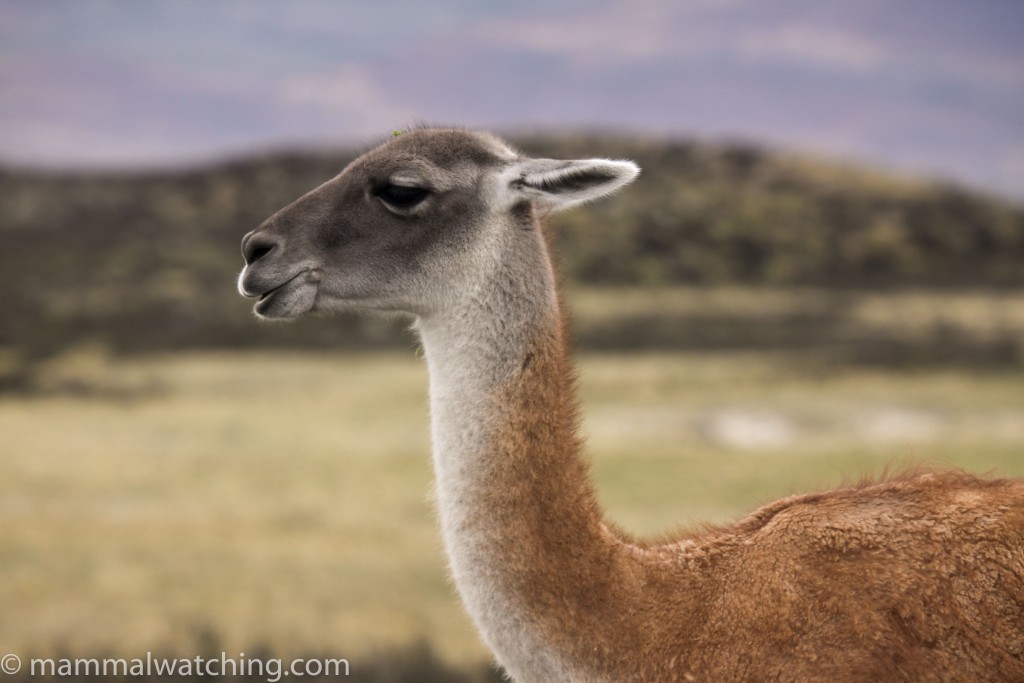
Guanaco, Lama guanicoe
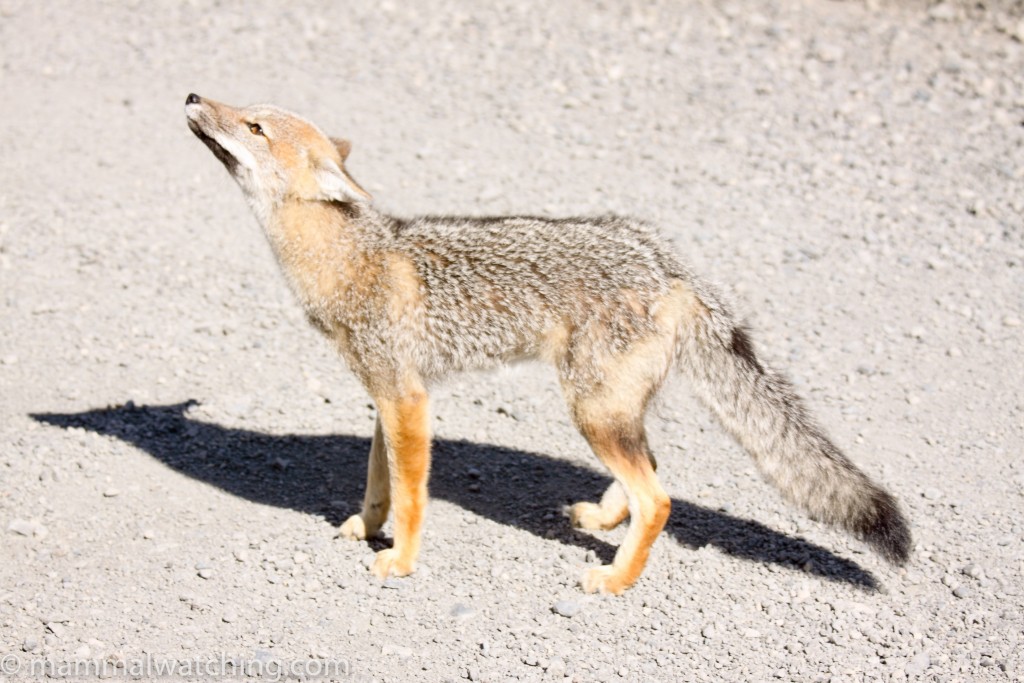
Chilla, Pseudalopex griseus
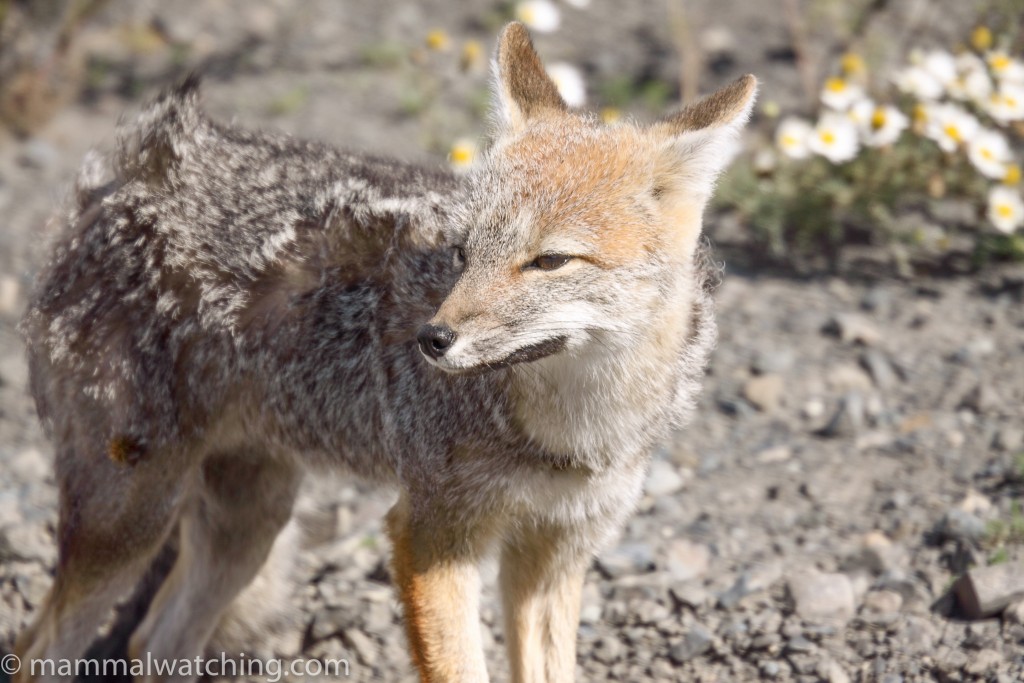
Chilla, Pseudalopex griseus
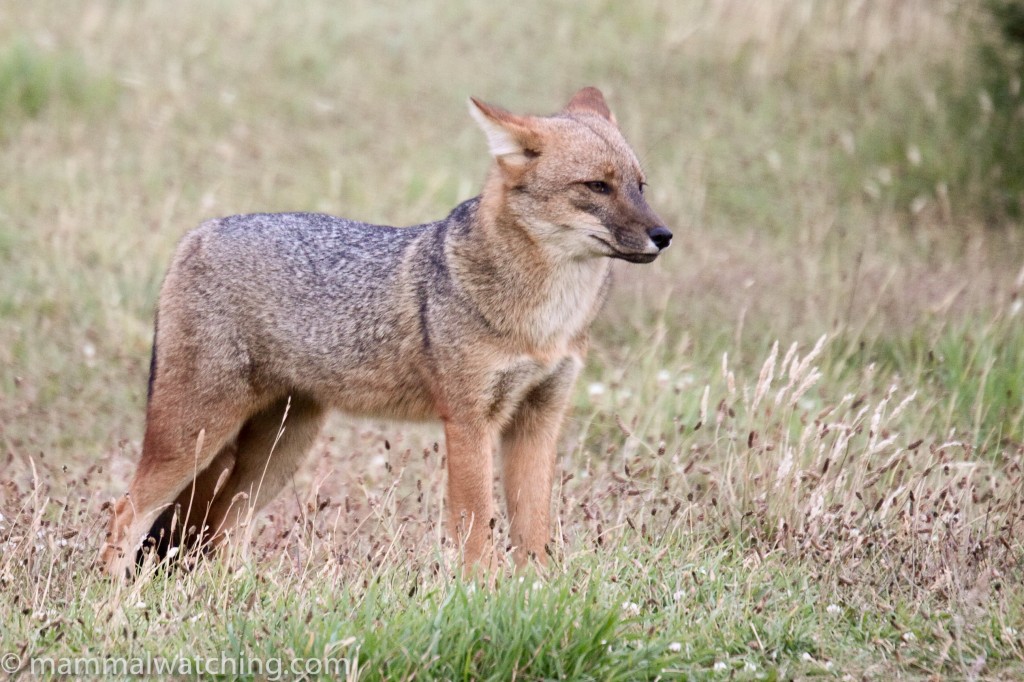
Culpeo, Pseudalopex culpaeus
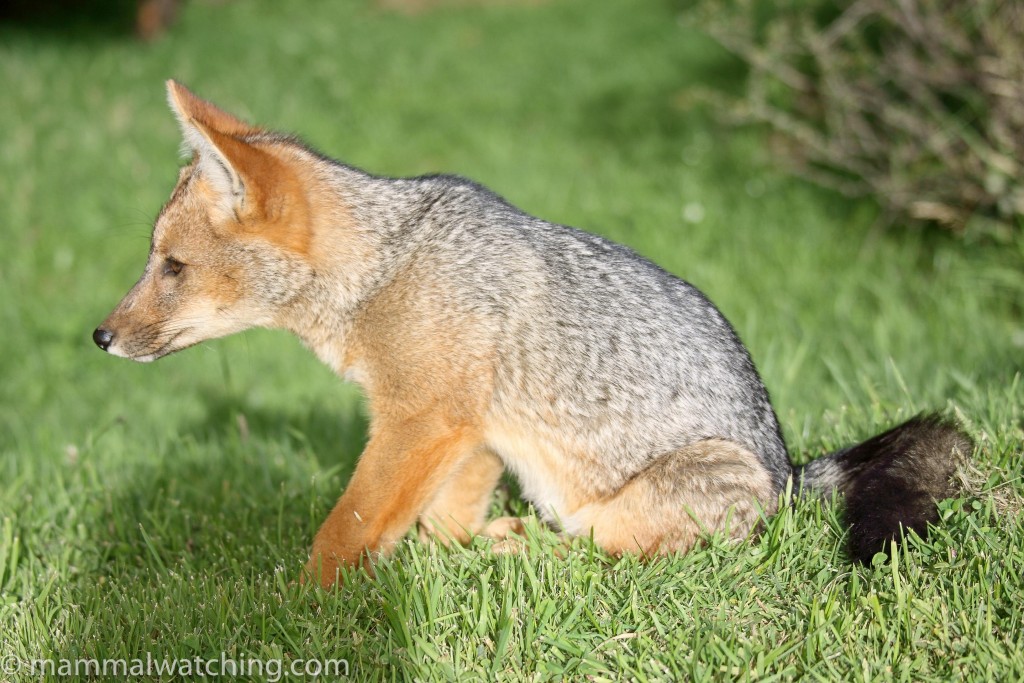
Culpeo, Pseudalopex culpaeus
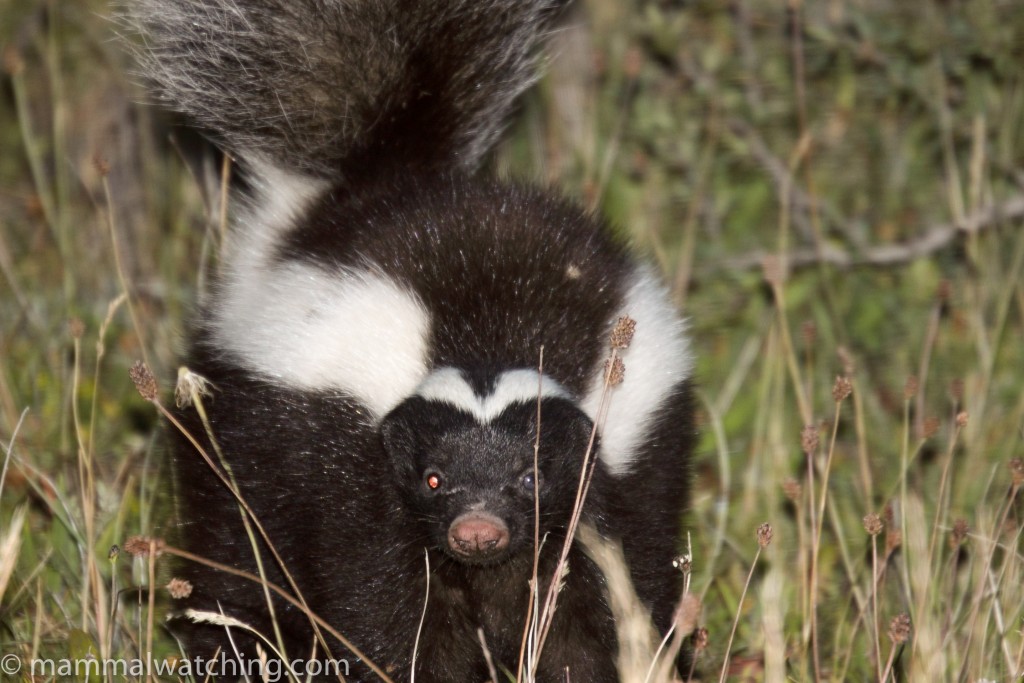
Patagonian (Humboldt’s) Hog-nosed Skunk, Conepatus humboldtii
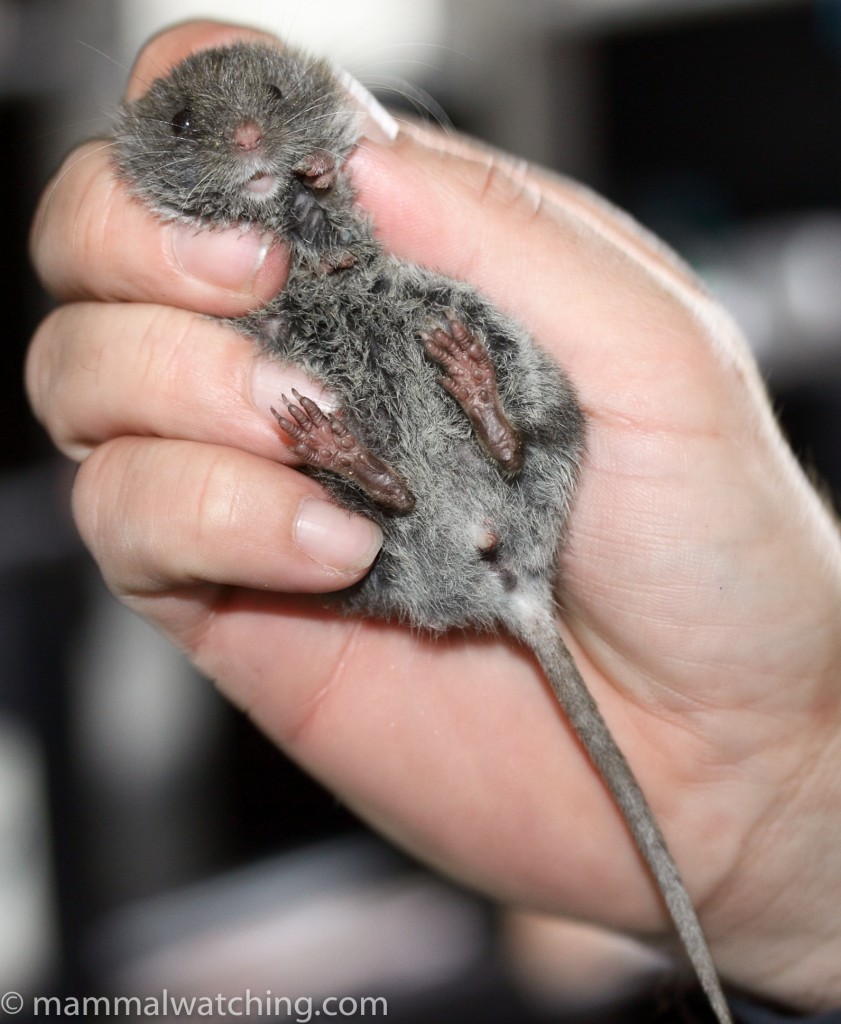
Long-haired Grass Mouse, Abrothrix hirta
Stuff I Missed
Big Hairy Armadillo: I tried hard to find this species. Judging by the number of burrows along sandy roadside banks they are not uncommon. But they are quite difficult to see. The burrows were most numerous along the Laguna Azul loop road and there were a great deal of armadillo diggings close to the cascades along the same road: when you get to the car park by the waterfall follow the road that took you into the car park (the track is pretty overgrown) upriver for about 100 metres. It drops into a slight depression and as it veers towards the river there is an even more overgrown track continuing on. There was a lot of digging around here. Armadillo burrows are – unsurprisingly –armadillo-sized and armadillo-shaped in cross section (an arch with a flat bottom). The animals have got to be more active at night but might be easier to find on foot when the wind isn’t blowing as they can be quite noisy but don’t have any eyeshine.
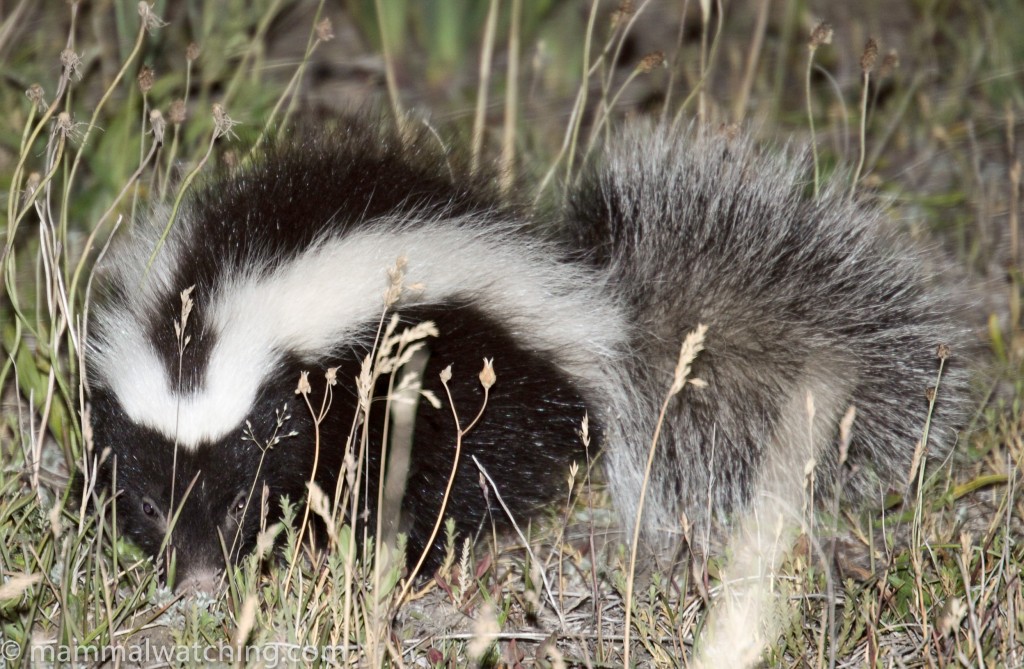
Patagonian (Humboldt’s) Hog-nosed Skunk, Conepatus humboldtii
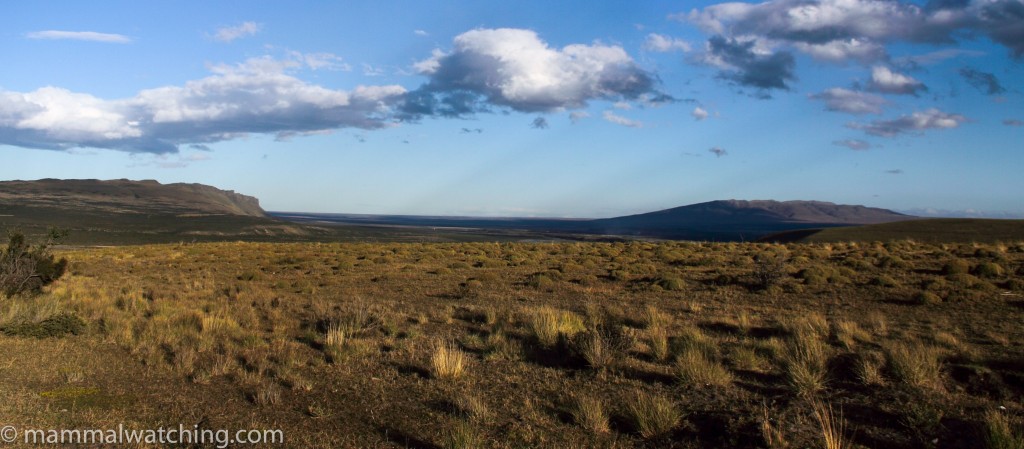
Patagonian steppes
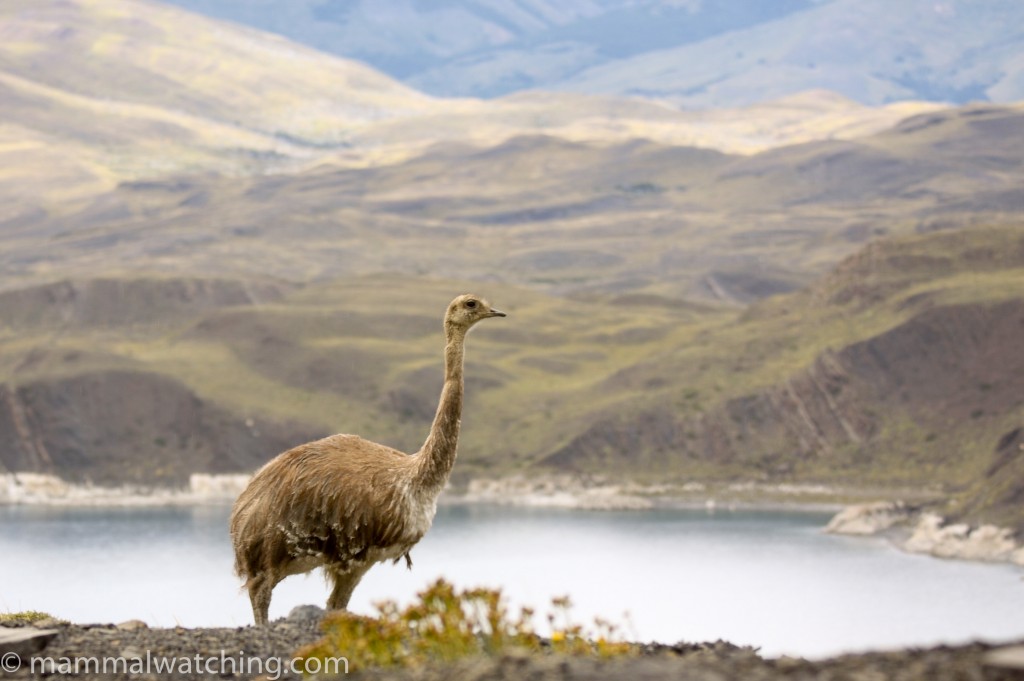
Rhea, Torres del Paine
Trip List
1. Olive Grass Mouse Akodon olivaceus
2. Long-haired Grass Mouse Abrothrix hirta
3. Sanborn’s Grass Mouse Abrothrix sanborni
4. Coypu (Nutria) Myocastor coypus
5. Puma Felis concolor
6. Culpeo Pseudalopex culpaeus
7. Chilla Pseudalopex griseus
8. Darwin’s Fox Pseudalopex fulvipes
9. South American Sea-Lion Otaria flavescens
10. Marine Otter Lutra felina
11. Southern River Otter Lutra provocax
12. Patagonian (Humboldt’s) Hog-nosed Skunk Conepatus humboldtii
13. Peale’s Dolphin Lagenorhynchus australis
14. Commerson’s Dolphin Cephalorhynchus commersonii
15. Chilean Dolphin Cephalorhynchus eutropia
16. Guanaco Lama guanicoe
17. Southern Pudu Pudu puda
18. Chilean Guemal Hippocamelus bisulcus
19. European Hare Lepus europeaus
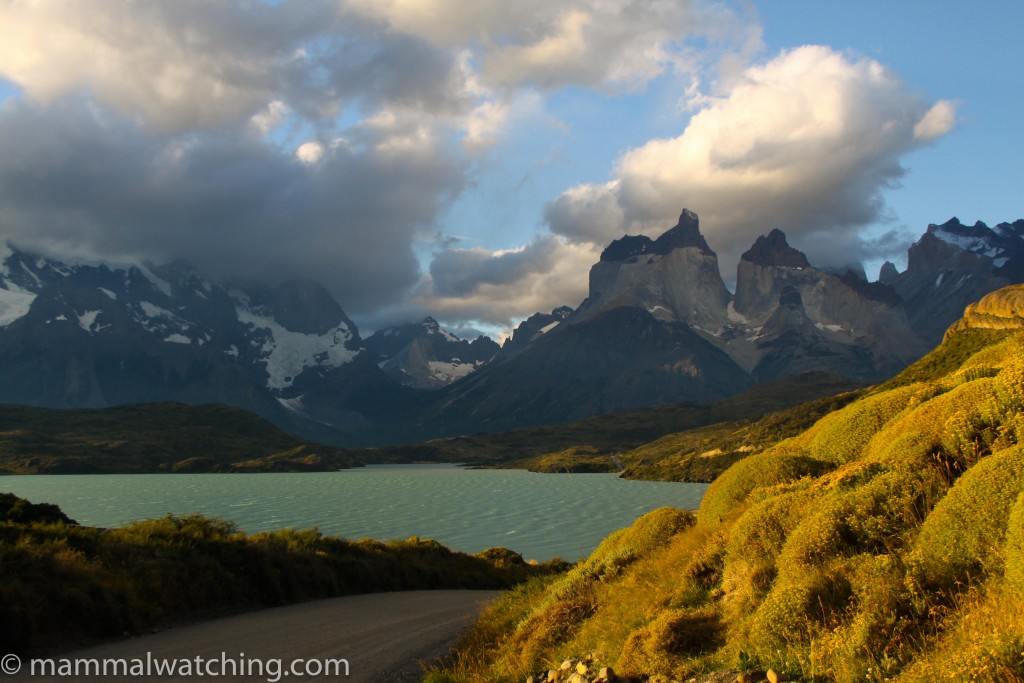
Torres del Paine National Park
1 Comment
Leave a Reply
You must be logged in to post a comment.


RobJansen
I guess the phone number of Javier misses one number (it seems phone numbers here have 8 numbers after the 9). I couldn’t reach him a week ago at least. Just a heads up to people who want to get in contact with him